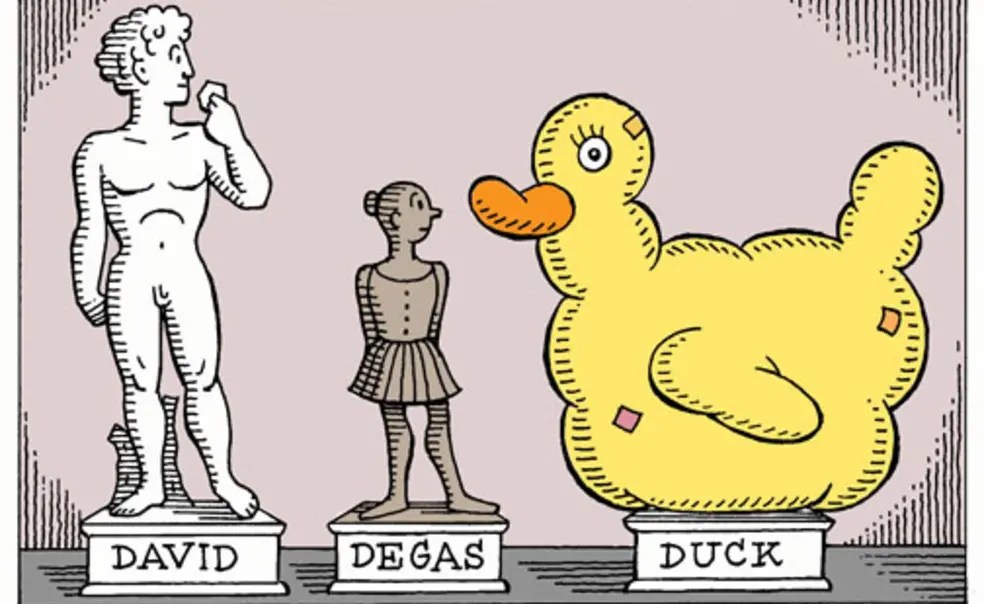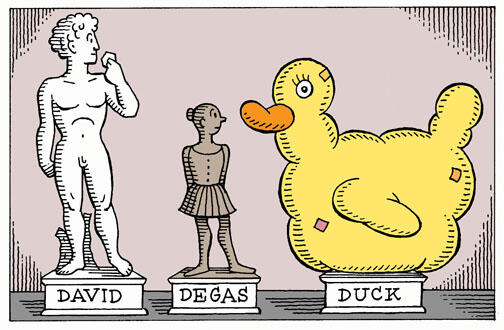What qualifies as art? (A giant rubber duck?)
As the doors to the Frist Multipurpose Room swung open at exactly 5:30 p.m. on a recent Wednesday, excitement and anticipation were palpable: After all, the 40 to 50 waiting students had been promised the solution to a campus mystery.
“Everything will become clear,” read the invitations to the event. But a stark hissing sound and the dark, seemingly empty room didn’t explain much. When the lights came on, neither did the ceiling-high, inflated rubber duck.
It all began April 4, when a wood and glass container appeared one morning outside Frist Campus Center, prompting students to “1. Drop Duck. 2. Take card.” In the following days, rubber ducks anonymously were placed in lecture halls, dorms, and eating clubs with the message, “Put me in the box by Frist.”
Posters followed, reading “Find yours” above an image of a rubber duck, sending students like Holt Dwyer ’15 on a campus scavenger hunt to secure a duck — and an invitation to the culminating event. “It seemed like this might be some bizarre recruiting thing,” he said. Others guessed a psych study or, as Melody Edwards ’15 hoped, “a rubber-duck-themed secret society.”
But all students found that evening was a giant version of the ducks that had been scattered across campus. “Is no one going to walk toward it?” asked one student. Another bravely stepped closer to the duck, prompting others to follow, poke, and prod.
Clues started to appear, but elusively. The pump that kept the duck inflated was labeled “VISUAL ARTS,” as was a nearby plastic chair. Several students tinkered with the air pump but played coy, refusing to offer any information.
Then it started to become clear. A man in a blazer, who circled the duck with a discerning eye, hesitantly identified himself as Joe Scanlan, director of the visual arts program at the Lewis Center. He declined to give details about who was behind the duck, but acknowledged it was the culmination of a student’s project for his advanced sculpture course. “Art is all about persuasion,” Scanlan said, and the project “worked well as an artwork and as a kind of social experiment on the allure of privileged access and society.”
The student behind the project, Diana Li ’13, attended the event, but denied any involvement. A few days later, though, she set the record straight. The ducks were “an arbitrary choice,” Li said, but the goal was “pushing boundaries and eliciting reactions — having people wonder how much trust can you put into this game, and reconsider what they feel qualifies as art.”
For Li, the most rewarding part of the project was being able to see the responses from the audience — some of them unpredictable. Even after Scanlan’s revelation about the art project, a group of students remained on the floor, waiting for something to happen. Said Sarah Schwartz ’15: “I came here hoping for an explosion.”













No responses yet